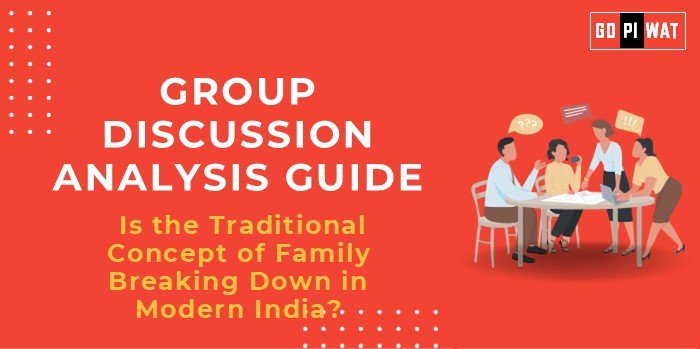📋 Is the Traditional Concept of Family Breaking Down in Modern India?
🌐 Introduction to the Topic
- 📖 Opening Context: Across the globe, the traditional family structure is adapting to social, economic, and cultural transformations, and India is no exception. This discussion centers on whether these changes signify a breakdown of the traditional Indian family or its evolution in response to modern life.
- 📜 Background: In India, the family has historically been central to social structure, traditionally extending across generations and emphasizing roles defined by cultural norms. Recent decades, however, have witnessed changes influenced by urbanization, economic opportunities, and shifts in social expectations, raising questions about the resilience and relevance of traditional family values.
📊 Quick Facts and Key Statistics
- 🏙️ Urbanization Rate: Over 34% of India’s population now lives in urban areas, fostering the rise of nuclear families.
- 👩💼 Female Workforce Participation: Increased by 6% in recent years, influencing family dynamics.
- 💔 Divorce Rates: While still low (around 1%), rates have doubled in some urban centers.
- 🏠 Joint Families: Only about 18% of households in cities maintain a traditional joint family structure, down from previous decades.
🤝 Stakeholders and Their Roles
- 👨👩👧👦 Families and Individuals: Central to redefining family dynamics, balancing cultural traditions with new social norms.
- 🏛️ Government and Policy Makers: Influence family dynamics through policies on labor, childcare, and women’s rights.
- 📺 Media and Pop Culture: Shape perceptions and expectations around family structures through narratives and portrayals.
- 🏢 Corporates: Affect family life with policies on work-life balance, parental leave, and remote work options.
🏆 Achievements and Challenges
✨ Achievements
- 💪 Enhanced Autonomy: Individuals, especially women, are experiencing greater independence in personal and family life.
- 💰 Economic Contributions: Dual-income households are increasing, enhancing the economic stability of smaller, nuclear families.
- ⚖️ Flexibility in Roles: Family roles have become more flexible, supporting modern values of equality and shared responsibilities.
⚠️ Challenges
- 👵 Elderly Support: Decline of joint families poses challenges in elder care within families.
- 🏢 Youth Displacement: Increased work-related migration disrupts traditional family support structures.
🌍 Global Comparisons
- 🇺🇸 Western Societies: Adaptation of family structures due to urbanization and workforce participation, resulting in various formats such as single-parent or dual-career households.
📖 Case Studies
- 📍 Kerala: Despite high female literacy, traditional family structures are prevalent, showcasing a hybrid model of modern and traditional values.
- 📍 Bangalore: A hub for tech professionals, Bangalore sees a higher prevalence of nuclear families and childcare services than rural regions.
💬 Structured Arguments for Discussion
- 👍 Supporting Stance: “The traditional family is evolving, not breaking down. Nuclear families allow for greater independence, financial stability, and adaptability in a modern economy.”
- 👎 Opposing Stance: “The breakdown of joint families contributes to loss of cultural heritage and challenges in supporting elderly family members.”
- ⚖️ Balanced Perspective: “While traditional family structures are changing, these shifts may allow families to adapt to contemporary demands while retaining core values.”
🧠 Effective Discussion Approaches
- 📊 Statistical: “With 34% of Indians now in urban settings, the prevalence of nuclear families is reshaping the traditional family landscape.”
- 📜 Historical: “For centuries, joint families defined Indian social structure, yet recent changes suggest a shift in what family means in India.”
- 🌍 Comparative: “India’s family evolution mirrors global trends, where economic needs reshape family roles and responsibilities.”
📊 Strategic Analysis of Strengths and Weaknesses
- 💪 Strengths: Adaptable family structures; dual-income financial stability; evolving gender roles.
- 🤔 Weaknesses: Challenges in elderly care; loss of cultural practices; weaker family support systems.
- 🚀 Opportunities: Social reform policies; growth of family services sector; influence of global perspectives.
- ⚠️ Threats: Potential isolation for elderly; rising divorce rates; decline of family support systems in urban centers.
📚 Connecting with B-School Applications
Insights from this topic can inform projects in social policy, HR policies promoting work-life balance, and family dynamics in a corporate context.
- ❓ Sample Interview Questions:
- “How do modern family structures impact workplace policies?”
- “What role can corporations play in supporting family-friendly policies in India?”
- 💡 Insights for B-School Students: Recognize the evolving family as a sociocultural factor in shaping human resources, labor markets, and consumer behavior in India.


